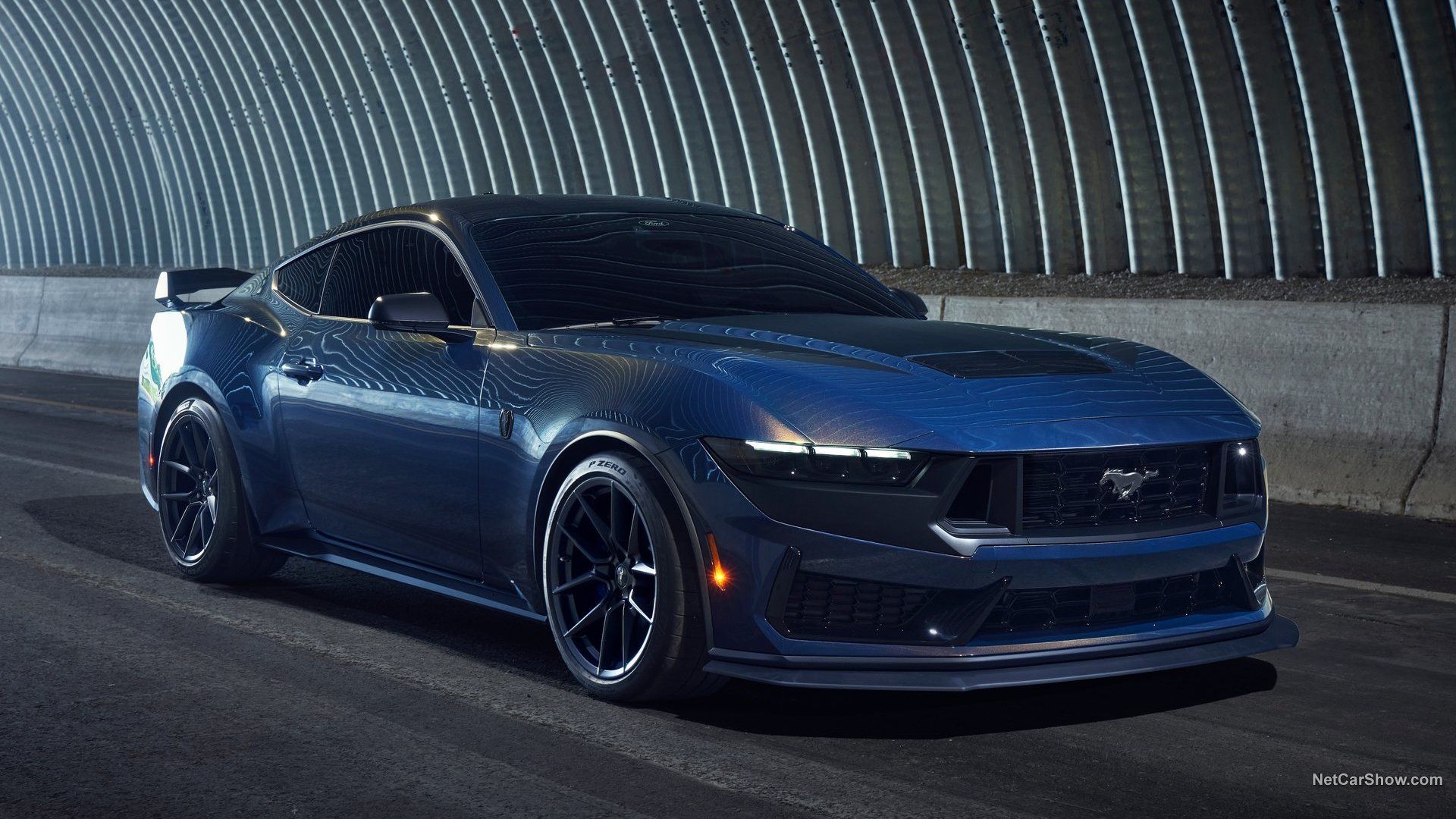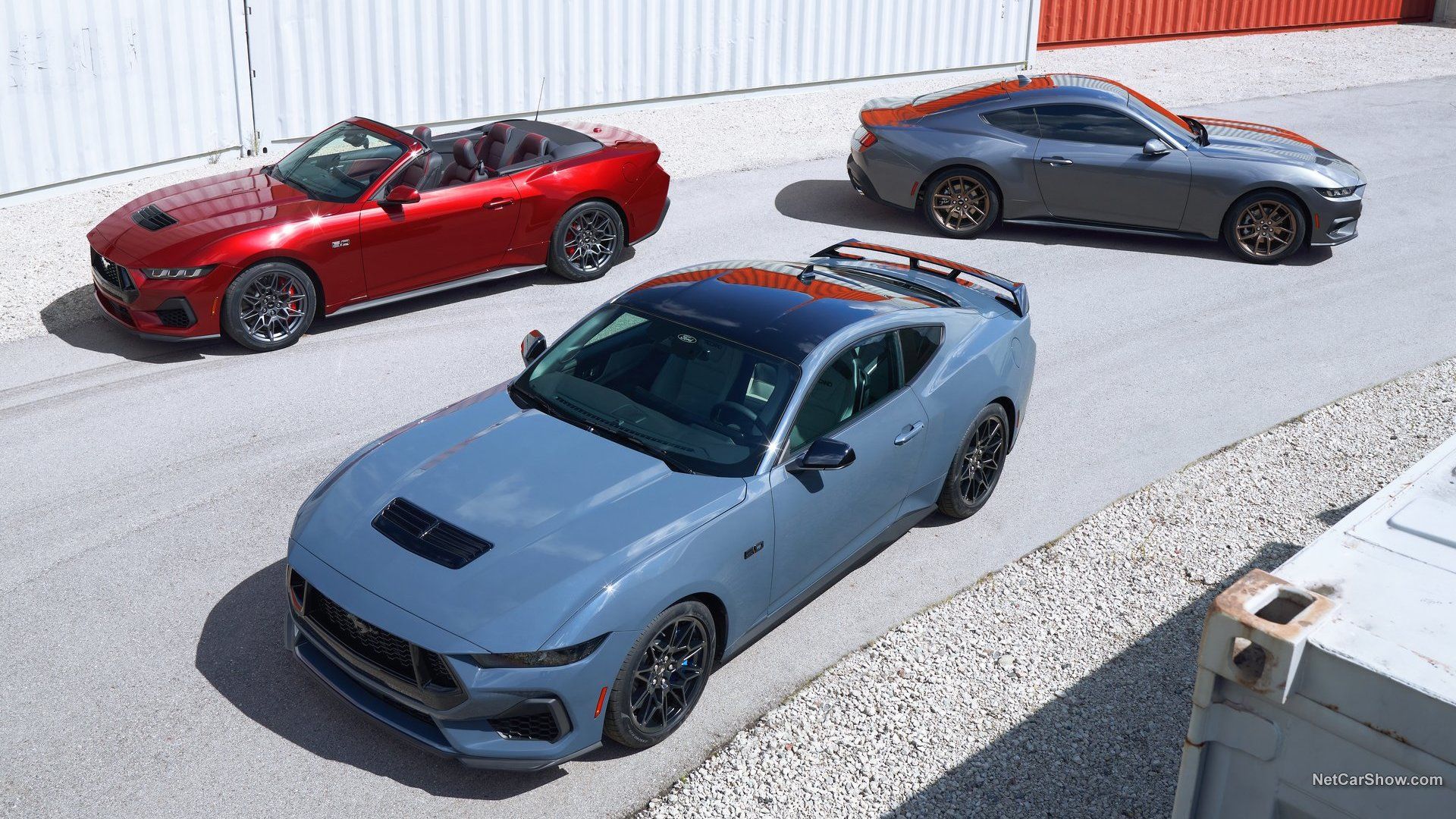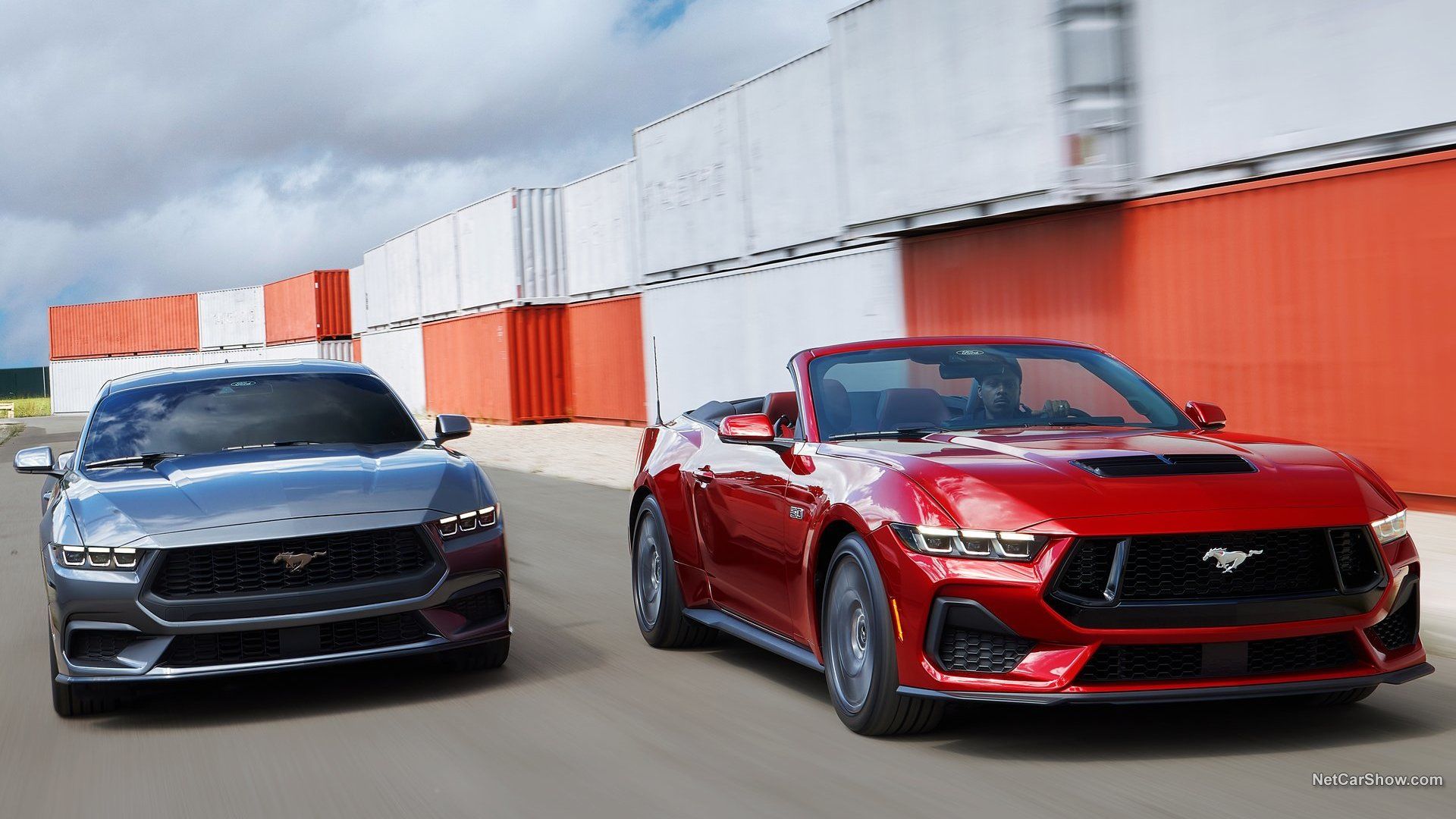The 2024 Ford Mustang was recently introduced, and it’s probably not what some people were expecting. If you are a Mustang fan, you probably don’t need convincing that not going the hybrid route with the S650 Mustang was the right move from Ford. While the company claims that this is an “all-new” model, it’s more of a thoroughly-revised S550. We have the same chassis and suspension architecture and, more importantly, the same engine options, although with some extra power. Regardless, turning the S650 Mustang into a hybrid would have been a mistake, and here are a few reasons why.
A Hybrid S650 Mustang Would Have Been Too Heavy
As it stands, the Ford Mustang is the perfect compromise between sport and comfort. The Challenger is more of a big boat that offers space and more comfort at the expense of cornering capabilities, and the Camaro has evolved into a proper sports car thanks to the Alpha platform. Weight often affects a car’s performance a great deal, and the Mustang S550 was not exactly a light car to begin with.
A base, S550 Mustang GT, equipped with a six-speed manual, boasts a curb weight of 3,705 pounds (1,680 kg) while an automatic-equipped convertible easily tips the scales at over 4,100 pounds (1,860 kg). While the extent of hybridization Ford had planned for the S650 Mustang is unknown at present, it would have meant that the S650 would be significantly heavier than its predecessor. Moreover, given that the 2024 Mustang is underpinned by a version of the S550's platform, it would have been a challenge to adapt the non-BEV platform in order to accommodate a hybrid powertrain.
A Hybrid Mustang is Unnecessary at this Point in Time
Ford already has a BEV model on sale that “wears” the Mustang nameplate – the Mustang Mach-E. What Ford did not count on was how well the Ford Mustang Mach-E would fare in a segment founded and until recently dominated by Tesla. Demand for the electric Mustang was so high that, back in July, Ford stopped taking orders for it. The good news is that since August 2022, orders for the Mach-E are, once again, being accepted. The main takeaway here is that the Mach-E has done so well in offsetting the company’s carbon footprint that another Mustang-badged BEV model simply doesn't make much financial sense at this point in time.
Utilizing the Existing Platform to its Full Potential
By now, it’s clear that the S650 Mustang sits on an improved version of the S550's chassis. We have already seen the current-generation Mustang unleash Veyron-like power levels without compromising much of the car’s drivability. Another car that proves old tech doesn’t necessarily mean obsolete is the 2023 Nissan Z, which carries over much of the 370Z’s hardware, and that’s a fine sports car in its own right.
Since there are no electric motors in the S650 Mustang, some extra performance has been squeezed out of both the 2.3-liter EcoBoost and the 5.0-liter Coyote V-8. While no exact figures were given, the turbocharged inline-four has received a new turbocharger, which would no doubt, bump output to over 330 horsepower (246 kilowatts) and 350 pound-feet (475 Nm). The 5.0 has received more extensive upgrades such as a new intake, new exhaust manifold, dual-throttle bodies, and exhaust camshafts with longer duration. In the case of the Ford Mustang Dark Horse package, the fourth-generation Coyote V-8 makes 500 horsepower (373 kilowatts).
The ‘if it works, don’t fix it” philosophy is what Ford, apparently, went with by when coming up with the 2024 Mustang since the same transmission options from the S500 are carried over. Unfortunately the Getrag, six-speed manual still comes with 3.31 rear gears while the 10-speed automatic has a 3.15 setup. A 3.55 or a 3.73 option would have been welcome. The Dark Horse package swaps the Getrag six-speed manual for a Tremec six-speed unit, exclusive to the trim.
The S650 Mustang would make for a better transition towards electrification
The S650 Mustang picks up right where the S550 left, which means it’s more of the same. More performance, more attitude, and hopefully, less crowd-stomping. Jokes aside, the edgier design still retains the classic, front-engine, rear-wheel-drive, 2+2, coupe layout, familiar to us since 1964. However, everything is slightly less nostalgic, especially inside the cockpit where the dual-cowl dashboard design is no longer present. The dual-tablet screen setup – one for the instrument cluster and one for the infotainment system – is one of many proofs that the Mustang is looking towards the future and this time it really is the last non-hybrid Mustang. Or is it?
FAQ
Q: How much does a Ducati Superleggera V4 cost?
When announced, the Ducati Superleggera V4 cost in excess of $100,000
Q: How much horsepower does a Ducati Superleggera V4 produce?
In ‘standard’ trim, the engine produces a claimed 221 horsepower. With the race ECU and exhaust fitted, it produces 231 horsepower.
Q: How many Ducati Superleggera V4 will be made?
500 were built and all sold out in a few hours.
Q: How fast is the Ducati Superleggera V4?
Very fast! No independent figures are available but expect 200mph to be dispatched with ease.




